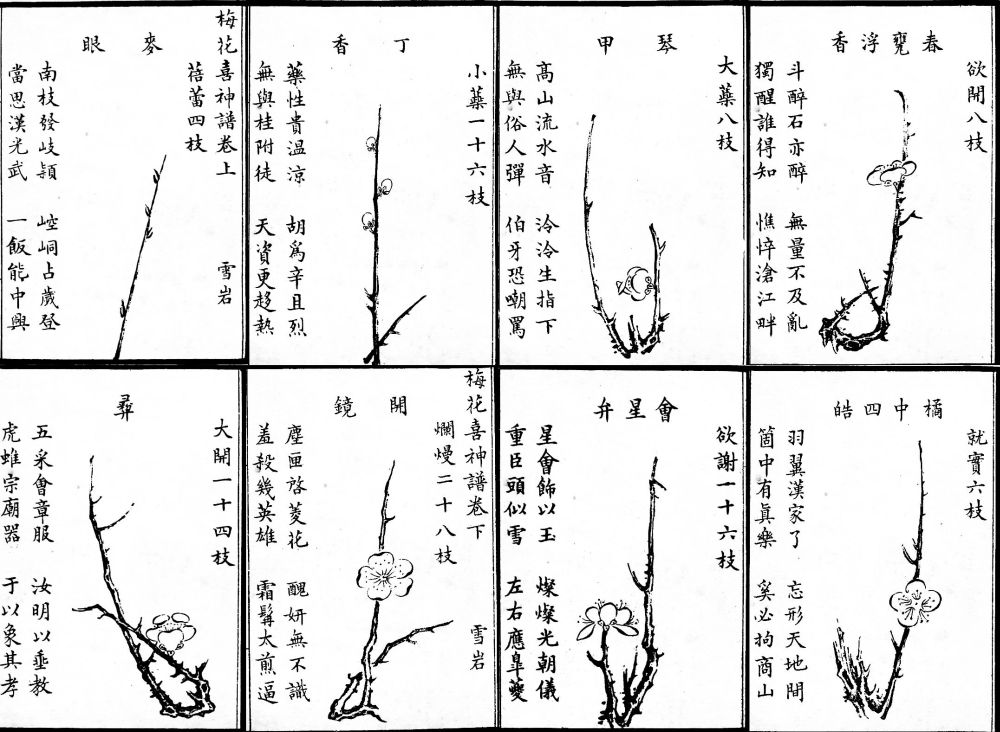Meihua xishen pu 梅花喜神譜 is China's oldest book specialising in the painting of plum blossoms, and the oldest surviving book that includes images of paintings (huapu 畫譜). Xishen 喜神 "spirits of luck" is a colloquial expression for paintings. The model book was written during the Southern Song period 南宋 (1127-1279) by Song Boren 宋伯仁 (fl. 1240), courtesy name Qizhi 器之, style Xueyan 雪巖, from Huzhou 湖州 (today in Zhejiang). He was an official in the salt distribution commission (yanyunsi 鹽運司) during the Jiaxi reign-period 嘉熙 (1237-1240). His collected writings are called Xicheng ji 西塍集. The book was the product of a whole wave of plum blossom painting among the literati of the time.
 |
First image of each section. According to Net Ease / 网易. |
His original draft included about 200 paintings of plum blossoms, but he decided to select just half of this amount. The paintings are arranged according to topics, namely buds (beilei 蓓蕾), the first cracking of buds (xiaorui 小蕊), the emergence of pistils (darui 大蕊), the opening of blossoms (yukai 欲開), blossoms wide open (dakai 大開), bright blossoms (lanman 爛漫), withering blossoms (yuxie 欲謝), and the growing of the fruit (jiushi 就實). On the left side of each image, a four-stanza poem is presented. Each illustration has a "romantic" title comparing plum blossoms to lotus, chrysanthemums, clouds, birds, or scholars.
Song's book was printed in 1261. It is outstanding for its numerous paintings that are actually the focus of the book, while the text is just a kind of padding. The oldest print was produced in 1261 by the Shanggui Hall 雙桂堂. Important reprints are the Gu Ni Garden 古倪園 edition from 1812, the edition of the series Zhibuzhuzhai congshu 知不足齋叢書 and Wanwei biecang 宛委別藏, the edition of the Furongxian House 芙蓉僊館 from 1826, as well as the series Congshu jicheng chubian 叢書集成初編, Xu guyi congshu 續古逸叢書, Yishu congshu 藝術叢編 and Zhongguo gu huaxue pu 中國古畫學譜 from 2006.
A kind of supplement or continuation was produced by Zheng Chun 鄭淳 in 1838 with the title Hou meihua xishen pu 後梅花喜神譜 or Zhuboxuan meice 竹波軒梅冊. In the original version, the book included a preface written by Lin Zexu 林則徐 (1785-1850), but Zheng revised the book after Lin was dismissed. The preface of the new version was written by the famous scholar Ruan Yuan 阮元 (1764-1849). The arrangement of Zheng's sequel is identical to Song's original book, with paintings of blossoms at twigs, and accompanying poems.